Just finished 17 days of family travel in Denmark and Sweden, visiting the prominent locales of my mother’s youth around Copenhagen, my father’s family in rural western Sweden, and a long list of castles, museums, gardens, and restaurants. We ate ridiculously well and spent many nights in fine hotels, all thanks to the generosity of my dad, who decided to throw caution to the wind and make this trip a memorable blow-out. Adriana and I, my parents, and Francesca managed to share a small-ish station wagon and two hotel rooms in various configurations during these two weeks and it went about as well as any of us could have hoped. That said, it was also occasionally claustrophobic, and everyone spent at least a day being rather irritable and grouchy. Still and all, we did quite well!
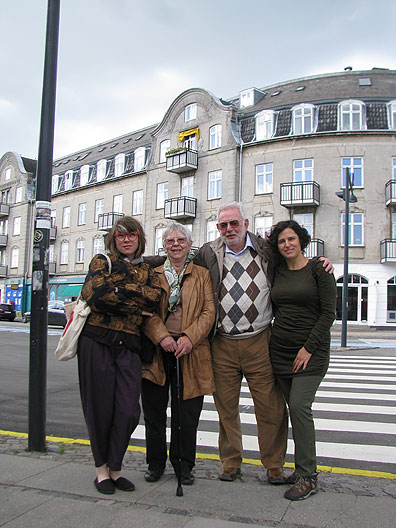
My mom grew up in the building behind, top floor just to the left of the yellow awning...this is in Klampenborg, Denmark.
I took hundreds of photos along the way, and realized as I was going that I wasn’t going to be able to blog daily, partly because when we got to the end of each day I was always pretty tired (jet-lag is a bitch, and driving most of the way also took its toll). Also, we had such a crazily intense push to finish “Shift Happens! Critical Mass at 20” before we left that I was quite spent and just needed to be on vacation. So here instead is a long entry full of photos and captions to capture some of the experiences I had along the way.
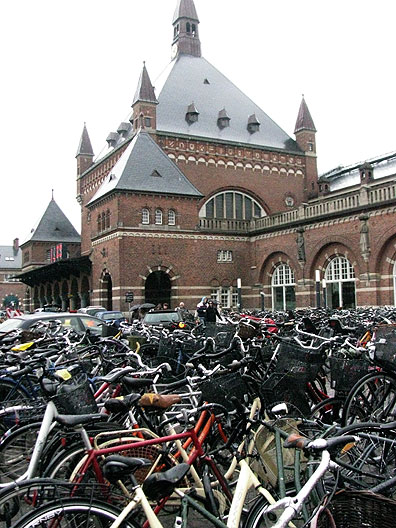
It is endlessly satisfying to arrive in Copenhagen to the seas of bicycles everywhere! Here are countless bikes parked outside the main train station.
I was reading Kim Stanley Robinson’s latest novel “2312”, all 561 pages of it, during these days and it was somehow quite a good complement to the tidy landscapes, the endlessly satisfying design that shapes everything about life in Scandinavia, from bathrooms to bike lanes to museums and public squares. Robinson’s book, titled with the date 200 years in the future, is broken into many short chapters, some of which are lists and fragments and excerpts from ‘future histories’—I liked them as much as the actual story (itself divided into multiple threads). One short side chapter was on a future historian’s analysis of the epochs that start more or less now, and reach to the period two centuries later when she was writing. I thought labeling the period we’re in now, starting more or less at the dawn of the 21st century and carrying on until about 2060 as “The Dithering” was probably spot-on, though a bit discouraging too, realizing that if accurate, I’m only going to see things keep deteriorating over the years I have left… of course another great concept in Robinson’s book is that longevity has been greatly extended, so characters are living between 130-200 years pretty routinely, all taking various hormonal and other therapies to arrest the aging process. Turns out in his future that bisexuality and balanced gender hormonal complexes are key to life extension. He does a pretty interesting job of creating characters outside of the usual boring gender binaries that dominate science fiction, and puts these newly complex possibilities into a larger scientific revolution of life extension.
Anyway, part of what he describes is a world where the rest of the solar system is full of terraforming projects, making habitable environments for humans on Venus, Mercury, Mars, and various moons, as well as tens of thousands of asteroids that have been turned into terraria, where endangered species and habitats are given long-term sanctuary. The terraria are themselves designed by various artists and bio-engineers, and the endless variations (and their descriptions) was part of what I found echoing as I drove through the Danish and Swedish countrysides. For where are earthly landscapes as precisely ordered, planned, and maintained as here? Combine these tidy landscapes with the proliferation of massive windmills (I remember when I visited Denmark in 1977 driving to see the first giant windmill at that time, which held such hope and promise for all of us involved in anti-nuclear politics then!) and the prospect of hollowed-out spinning asteroids holding deserts, oceans, mountains, and even gently rolling Scandinavian farmlands seems somehow more plausible.
The fear and loathing of ‘technology’ that is still common among many social radicals felt rather misdirected every time I went into a beautifully-designed, immaculate commode. Similarly, when I again had the pleasure of navigating the streets of Copenhagen on foot, by bicycle, or by bus or tram, the harmonious design of the urban landscape, facilitating the easy and pleasant movement of its residents, was very inspiring. In Sweden we found ourselves under the Orwellian gaze of speed cameras throughout the country, but weirdly, our rental car would warn us with gentle alarms that we were approaching the camera and what speed our car was expected to maintain as it passed. Can’t say I liked that much, but it did prevent us getting any more speeding tickets (we got nailed on our second day in Denmark when a speed trap along the southeastern coast caught us going 70 km in an unmarked 50 km zone—wouldn’t have been so bad but the fine was doubled because our speed exceeded 20% of the limit and thus we had to pay nearly $500 for our trouble! Obviously we were a bit sticker-shocked by that.)
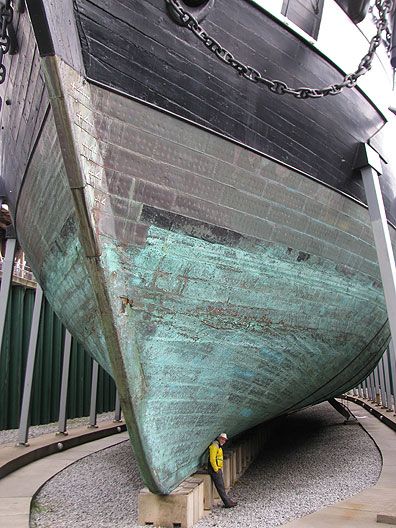
That's me under the Jylland Frigattan, a rebuilt warship from the 1800s that sits in Ebeltoft, Denmark, where my aunt lives (she worked on this for many years).
The modern environment in Scandinavia is peppered with reminders of the long history that preceded this time. Danish and Swedish castles, and many of their older towns, were built in the 1600s when their military might was at its height. In Stockholm I skipped a second visit to the Vasa museum to see the massive warship built in the mid-1600s only to sail out on its maiden voyage and get hit by a sudden squall, sinking it in Stockholm harbor where it laid for 333 years until they brought it up and built a museum around it a couple of decades ago. It’s a great story about hubris and technology in a much earlier period! Earlier in the trip we visited the Viking museum in Roskilde, Denmark (also home to the biggest Lutheran church in the country where all the kings and queens are kept in elaborate marble tombs) which has expanded since I visited it more than 20 years ago. The showpieces are 5 viking ships that had been deliberately sunken to create a defensive rampart in the bay, and were recovered in the early 1960s. But they’ve added a bunch of very informative exhibits, including rope-making, tackles, oars, carving ships from tree trunks, and a beautiful outdoor collection of trees in boxes, labeled with explanations of what they were used for in the centuries of sailing ship evolution. I loved the precision of the descriptions showing how various trees were used and how their own evolution fit into the local history. Here’s the Beech tree for example:
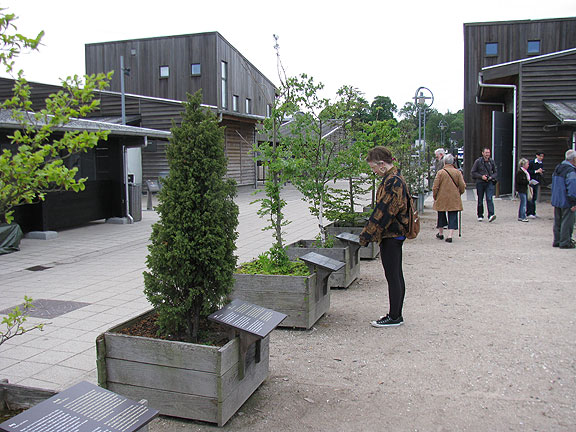
There were a couple dozen diferent trees with explanations, just next to a workshop where they were remaking one of the original ships.
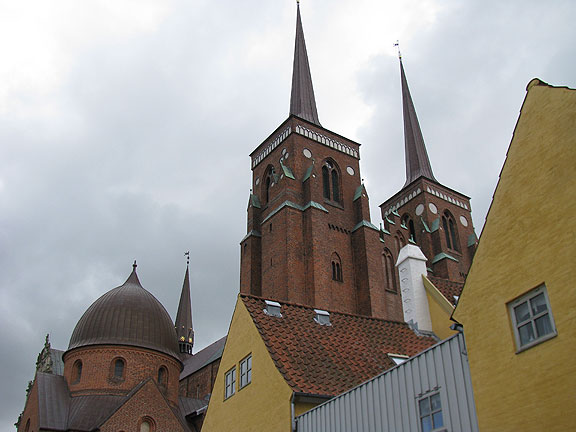
Roskilde Domkirke, the biggest church in Denmark, home to marble tombs of most of the dead royalty...
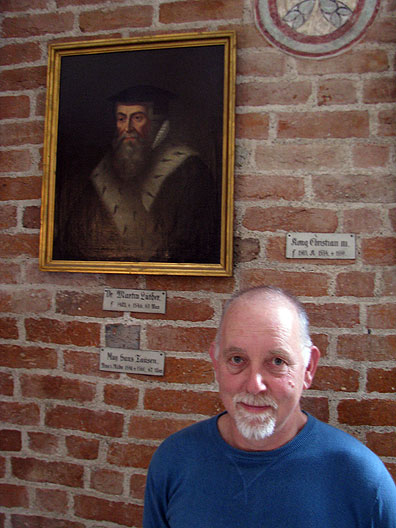
... and a portrait hanging of my direct ancestor, Hans Tavsen, the man who brought the Lutheran Reformation to Denmark in the 1500s, the first revolutionary in my family!
We went to Køge, a port city south of Copenhagen, on our way to visit my cousin in the countryside near Rødgivet. By happy coincidence, my pal Masha had mentioned on Facecrack that she was excited about a public playground installation that had been placed in the port by among others, San Francisco’s own Rebar group. We had to check it out and we loved it! The Conservatory of Discarded Pianos greets you at the harbor’s entry—luckily for us some students and a teacher showed up and some of them knew how to play, so we were suddenly being serenaded by some rather talented piano playing! My parents weren’t up for the wandering walk to discover the other installations over the 30 acres of the port, so me and Adriana and Francesca scurried off to see what we could find and had a blast. Here are some of the things we came upon:
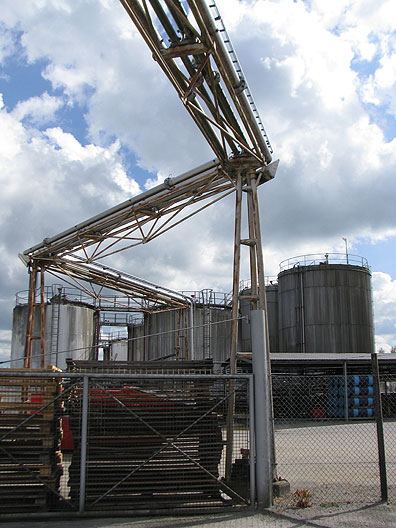
Clearly part of the point of this whole Urban Play installation was to get you to wander around the industrial landscape and see it in new ways...
We spent a lovely evening at my cousin’s chateau, a sprawling centuries-old farm with a magnificent huge house that they’re slowly rebuilding. The next morning they took us to the sea to see the cliffs near Rødgivet, really lovely in the warm sun. Apparently these cliffs hold the ash seam that provides corroboration to the theory that Earth was struck 76 million years ago by a huge asteroid near Chicxulub Yucatan in the Caribbean, and thus they may be declared a UN heritage site soon.
Driving around Denmark there is as much bicycle infrastructure in the middle of ‘nowhere’ as there is in the cities. The endless green fields were gorgeous too, especially against the ever-changing skies. The light and air in Scandinavia is so refreshing and as Adriana put it a few nights ago, it’s like watching a fireplace—you can just stare and stare.
We came to Ebeltoft where my aunt lives, north of Aarhus, Denmark’s 2nd largest city. She has a great view and we watched the Tuesday evening regatta take off in their weekly race, spinnakers in full bloom. We also had a great dinner on her porch, salmon and asparagus! While in Ebeltoft for a few days, Adriana and I took in one of the European cup soccer games at this incredible ancient bar, after which we strolled around the gorgeous little town, practically preserved in glass, during the late evening light (sunlight really didn’t disappear until after 11:30—further north, in Sweden, we had sunsets stretching to midnight and beyond).
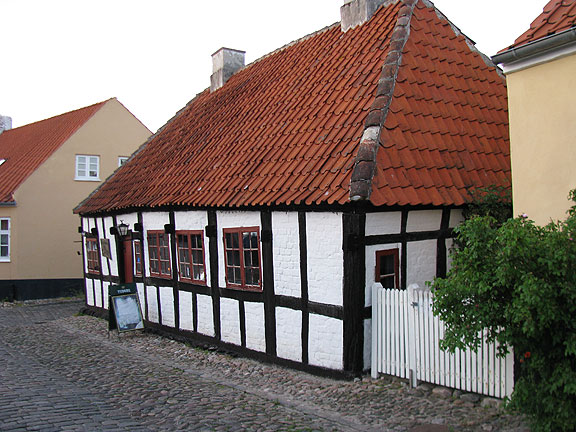
We caught a match in the EuroCup at this bar, dating back to the 1500s (its giant TV screen was a bit newer).
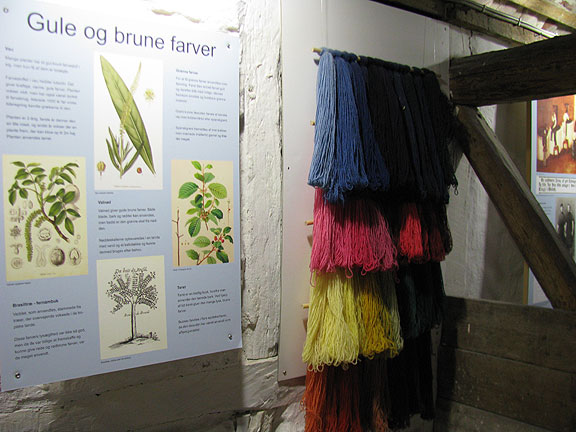
Couldn't read the Danish too well, but the displays showed where the various dyes came from--similar to an exhibit we saw in Peru last year!
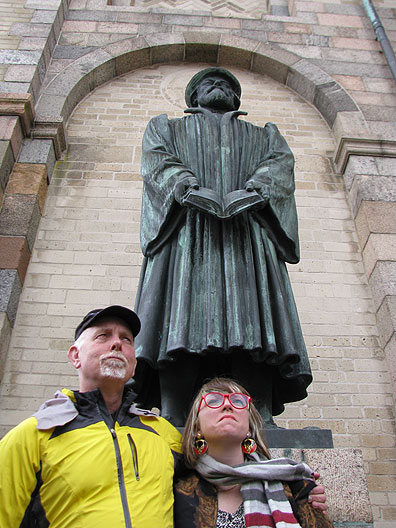
Here we are with our great-great-great-etc-etc-grandfather, Hans Tavsen, outside of the Ribe Cathedral where he did his thing.
We also took a day trip all the way to Ribe in southwestern Denmark (where my ancestor Hans Tavsen was the priest in the famous cathedral—also a big statue of him outside), stopping in Silkeborg on the way to visit the Asger Jorn museum. He was a talented artist, very political, a key early participant in the Cobra group and also the Lettrist International and the Situationist International. Not as well known globally as Guy Debord, but clearly he brought a lot to the table. We learned in the museum that he lived a pretty impoverished life and died relatively young in 1972, but he’s considered now one of Denmark’s greatest artists ever. We loved the museum! Here’s a few shots of some of his work:
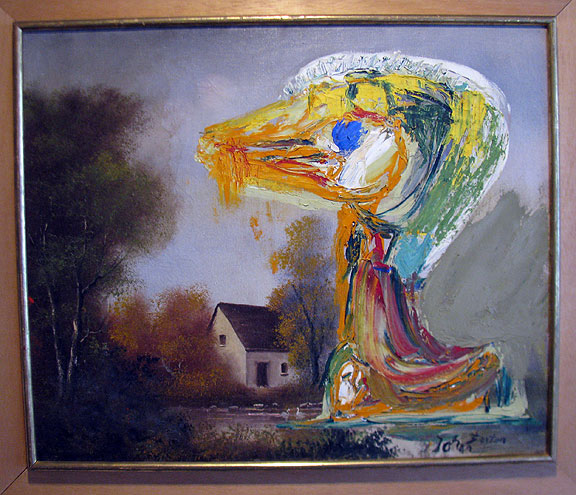
"The Disturbing Duckling" by Asger Jorn, 1959. An example of one of his pieces where he added to an old classic.
We took a 4.5 hour ferry ride from Grenå, Denmark to Varberg, Sweden in beautiful weather, on our way to see my father’s family’s old farmstead in Overlida. We visited the local cemetery in Mjöbeck, the adjacent village, in search of ancestors, and found dozens of Carlsson’s and Karlsson’s but only a couple were known to us as actual relatives. There was a lot of amazing purple flowers everywhere in Denmark and Sweden—here’s a shot of them with the old family church in the background.
Leaving the family reunion in Overlida, we went to see one castle after another, first Vadstena, which also has a nearby monastery worth visiting, all along the huge freshwater lake that Jönkoping is at the foot of (a Lebanese guy we bought kebabs from us told us the whole of Lebanon could fit in that lake!).
Later we made it to Mariefred where Gripsholmsslott is, a really gorgeous old castle that is fantastic inside and out. It’s on a lake that is connected to Stockholm, a few hours downstream and was an important defensive structure in the 1500s.
In Uppsala we were in the middle of the city, home to one of the oldest and most prestigious universities in Sweden. The Anatomical Theater in the museum dates from 1662 when it was a state of the art facility for dissecting cadavers and studying anatomy. The museum is now occupying the same building that was once the heart of the old university, and in the museum are fantastic exhibits detailing the history of science and technology, much of which was rooted in that very location. The famous species system creator, Linneaus, was there, along with astronomers, botanists, and many others. Early telescopes and camera obscura, even scissors dug up from a Viking grave, show how long into the past stretch a lot of things we think of as modern. Linneaus also created a botanical garden in the 1600s which is maintained in his original design to this day. On the outskirts of the city are the huge burial mounds that comprise “Old Uppsala” which some claim as the source of Scandinavian culture, where we had a nice walk under gray windy skies.
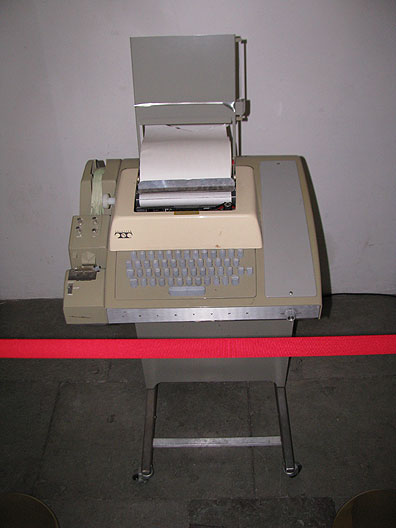
The museum is chock-full of old technologies, 19th century collection boxes, scientific instruments from centuries past, and even a new exhibit about to open of old computers... here's the first one I ever saw, when I was in 10th grade.
Finally we made it to Stockholm where we stayed in a converted jail on a small island called Langenholm. It is a very modern place, typically Swedish in its tidiness and economy of design, all planted into the original cells and floors of the old jail that functioned until the 1970s. Imagine staying in Alcatraz for example! During our three days in Stockholm we made it to many museums, toured around on bicycle a bunch, including a lovely late-night ride around the island of Södermalm during which we accidentally came to a high point with an amazing view of the sunset skies over the whole city at around 11:30 pm.
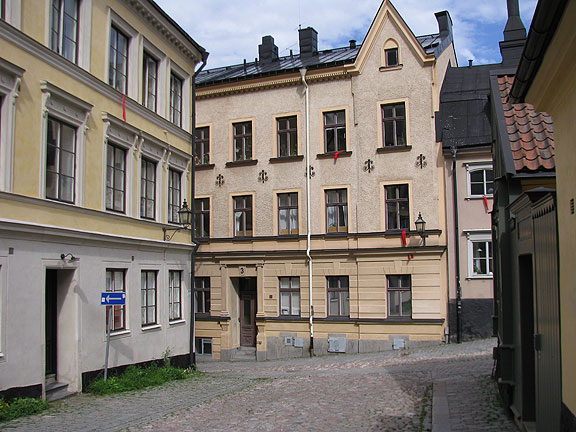
In the same neighborhood, people are protesting transit excavations in the hills beneath them by hanging red cloths from their windows.
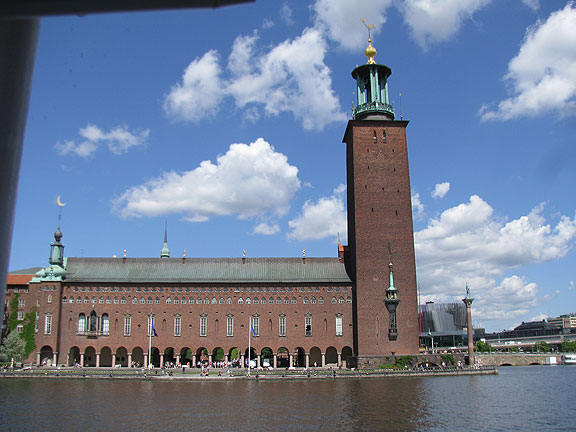
The famous Stockholm City Hall where the Nobel banquet is held each year. The building was built in the 1920s and deliberately designed to seem much older.
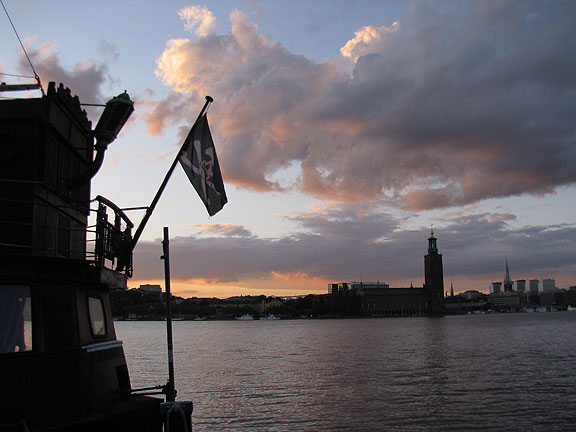
City Hall across the water... pirate ship in foreground (Sweden is home to Pirate Bay and the Pirate Party).
The last stop in Sweden was Kalmar, another fantastic castle, restored in the 20th century after falling into disrepair by the late 19th century. Then we whizzed back to Copenhagen for a lovely dinner with my old college flame Debbie and her partner Anne, together now in Copenhagen for 15 years… what a lovely journey! Perhaps a bit of dithering is a good idea sometimes. It was certainly a departure from my many recent trips where I am making appearances and giving public talks. Which is what is happening twice in Madrid, where I am now… will write about that later.

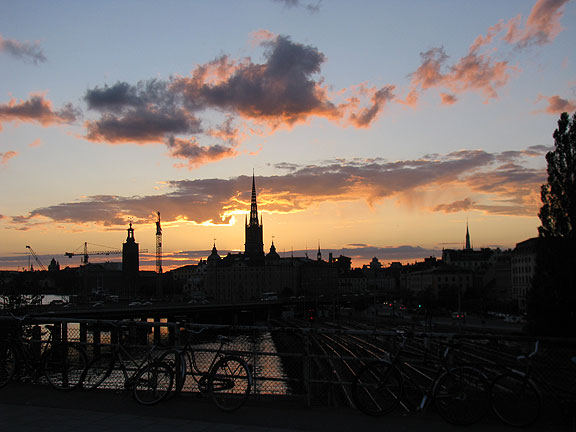
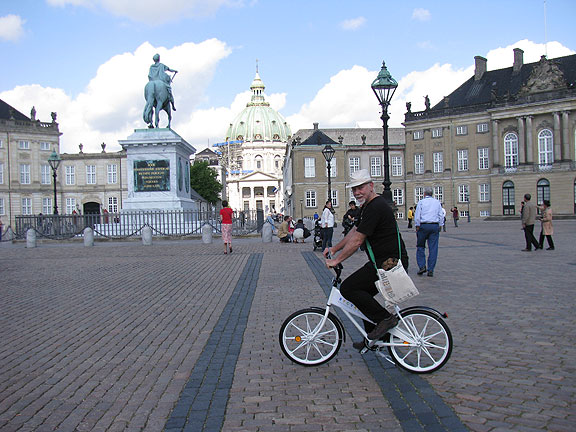
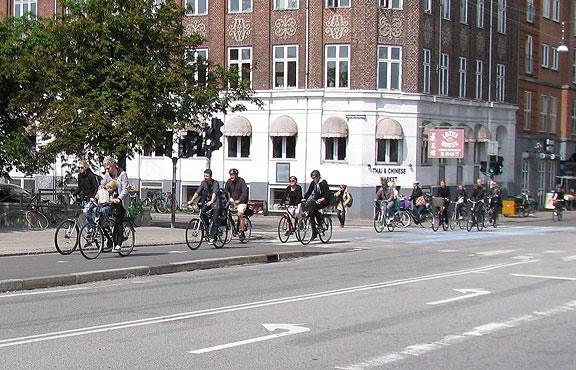
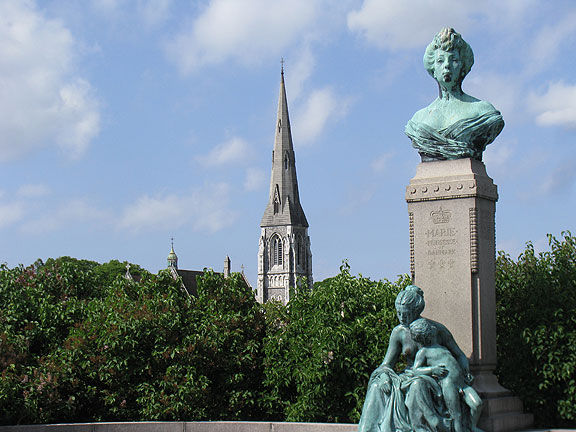
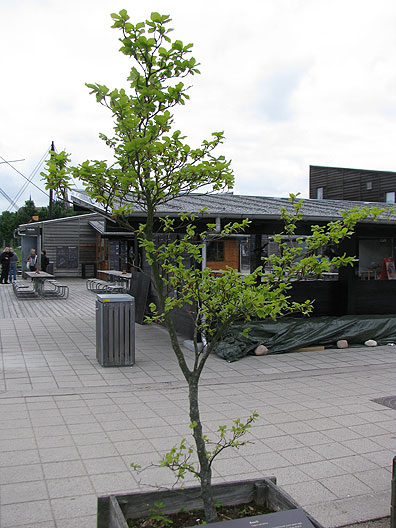
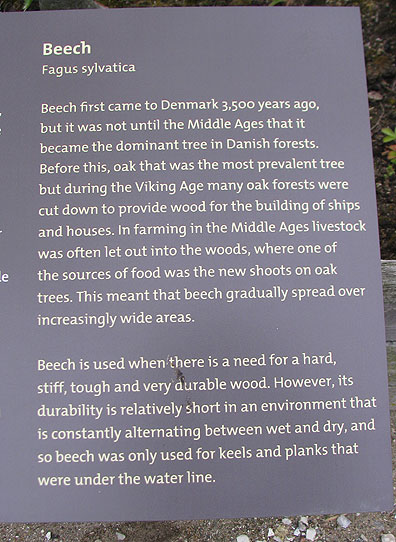

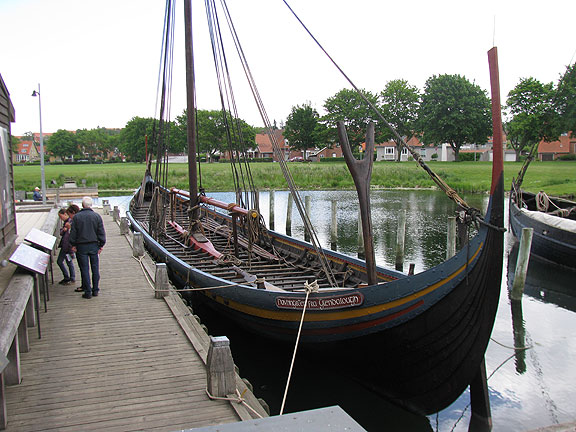
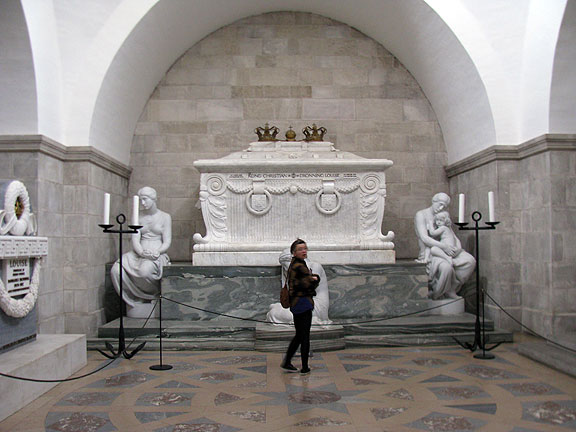
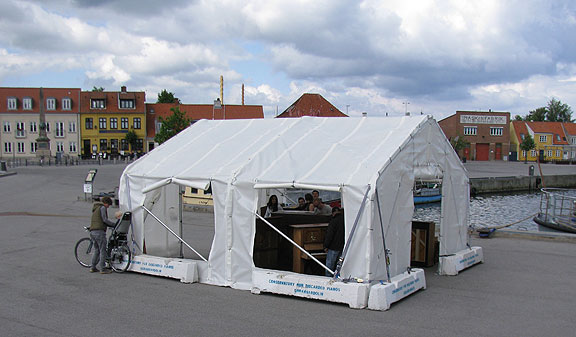
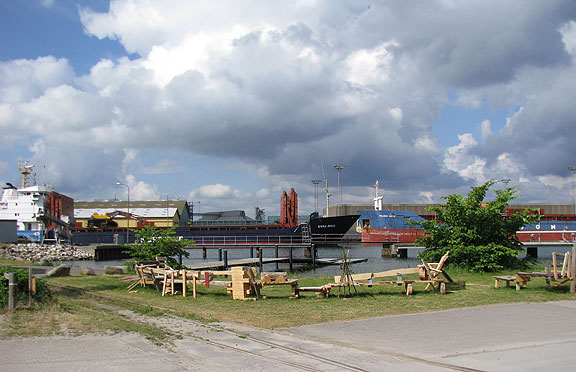
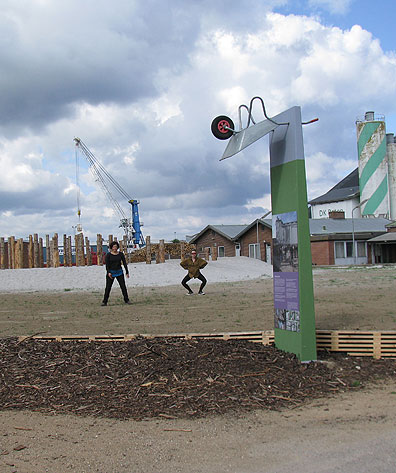
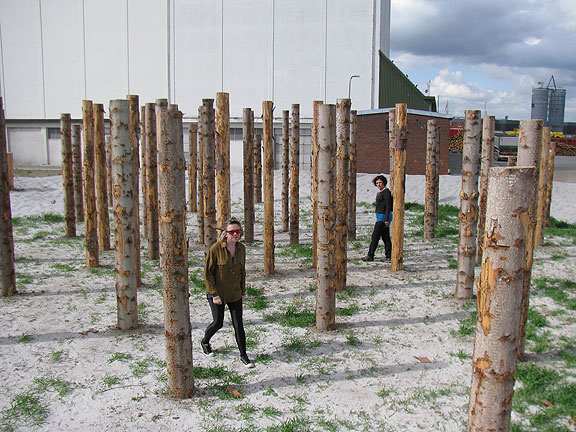
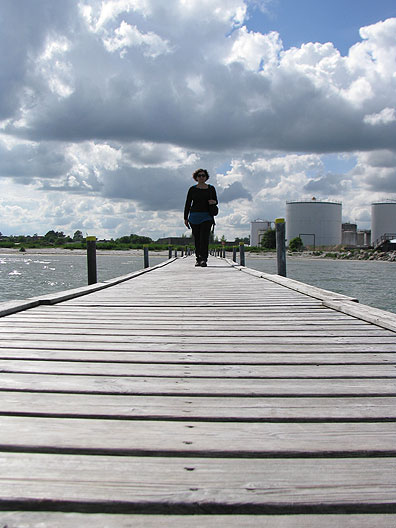
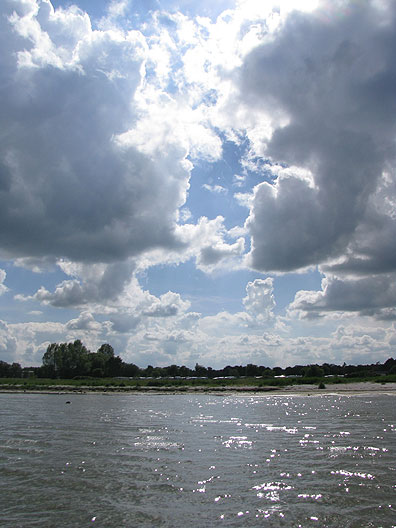
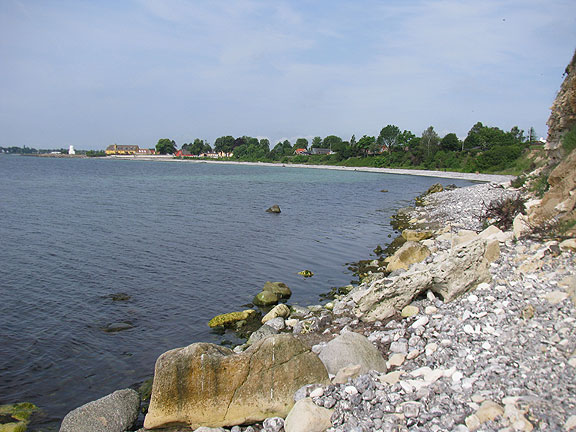
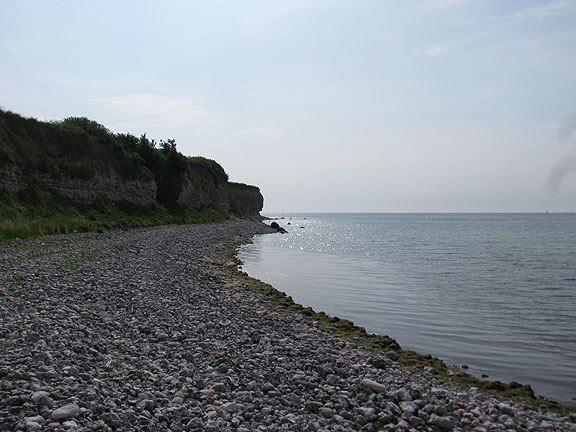
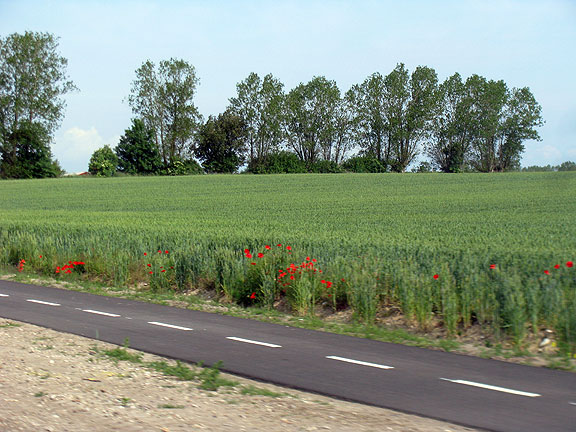
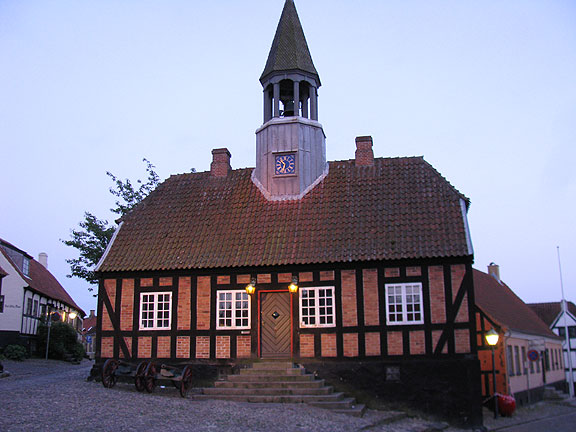
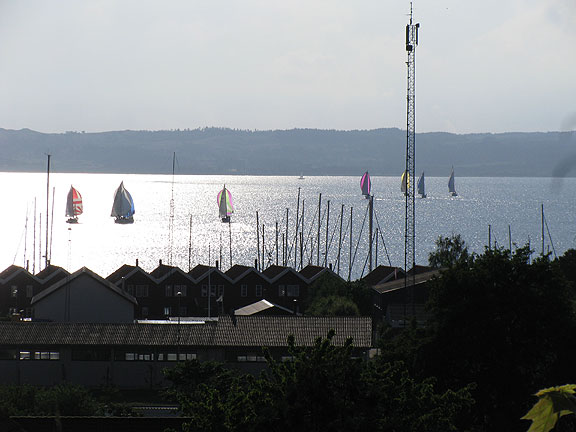
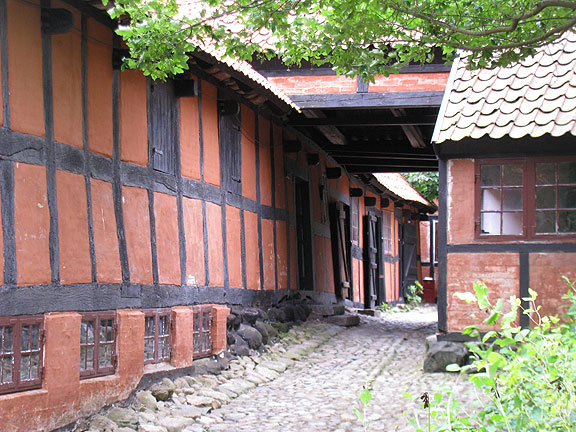
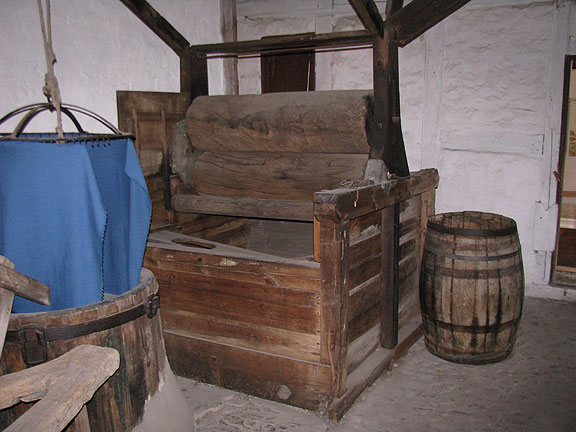
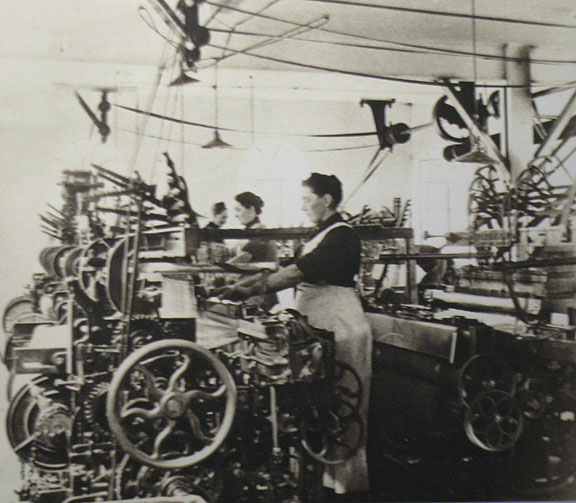
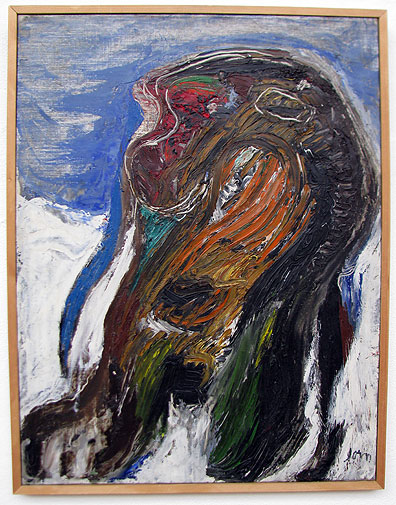
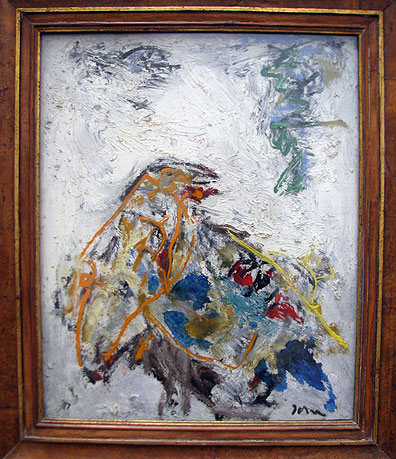
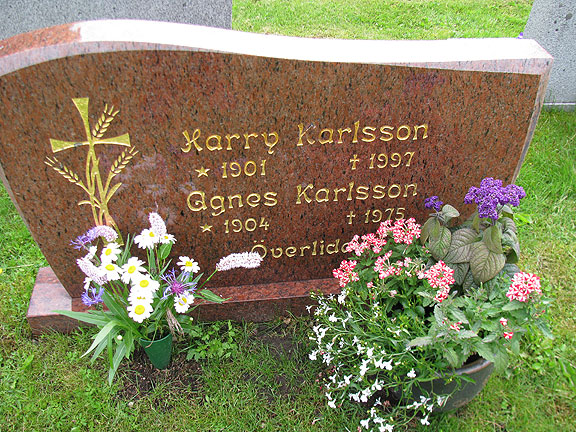
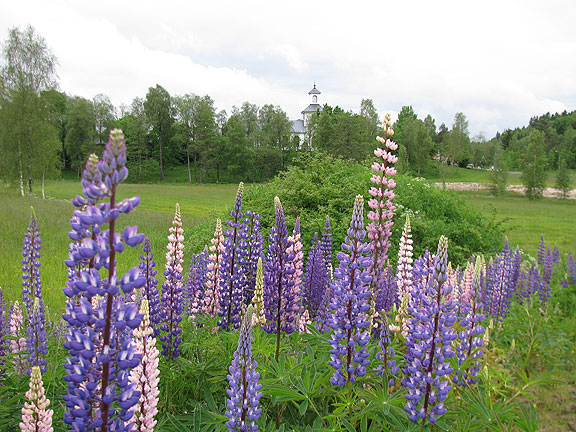
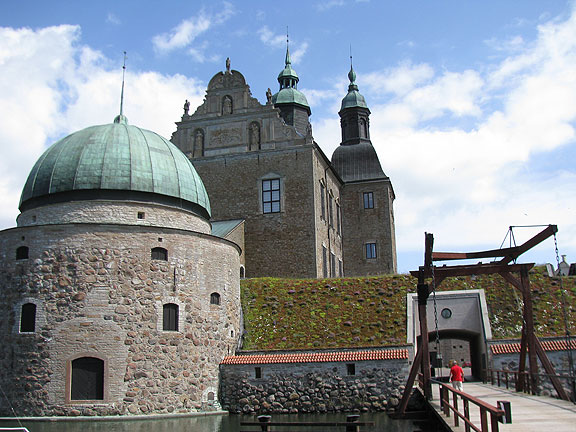
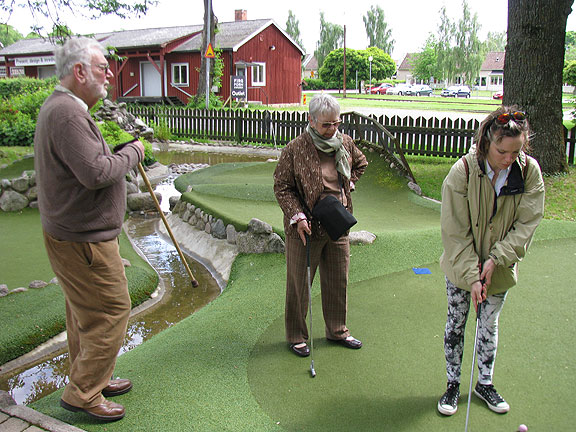
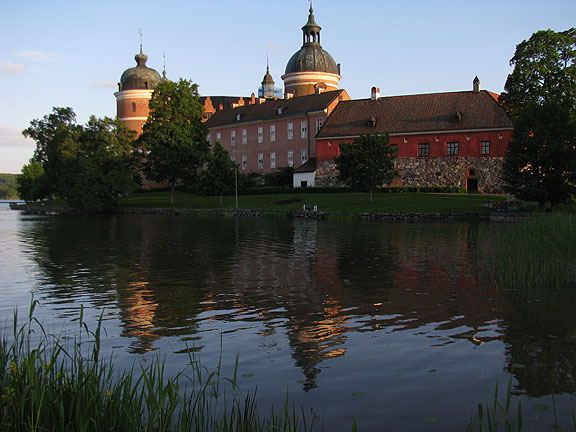
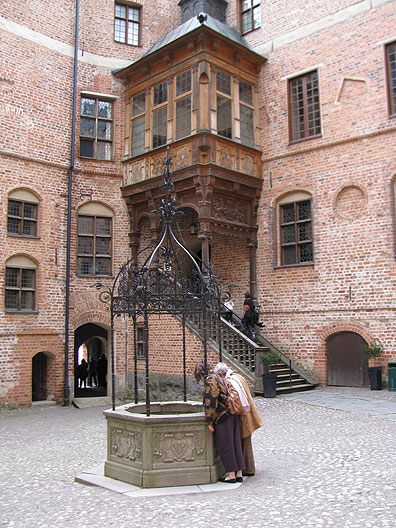
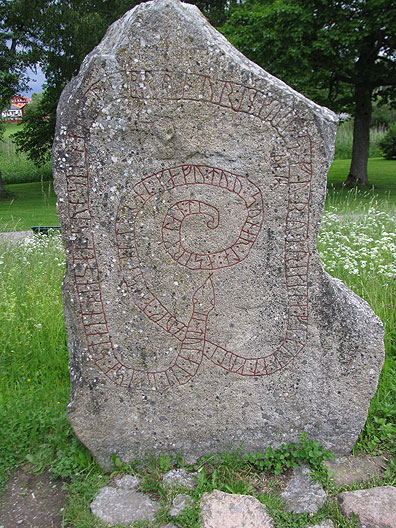
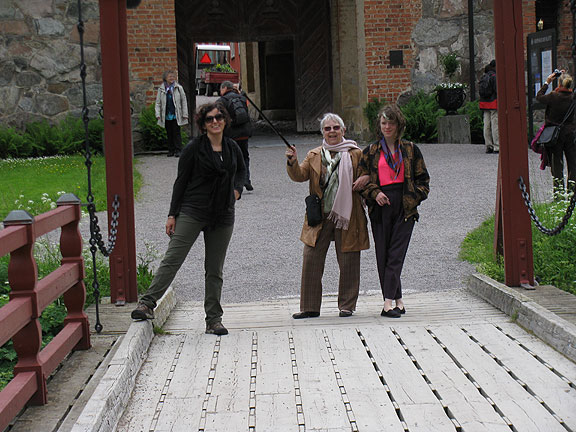
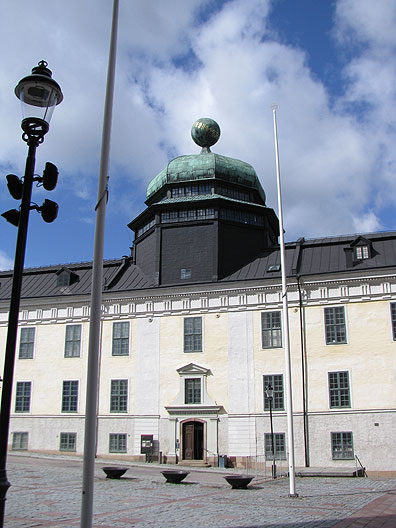
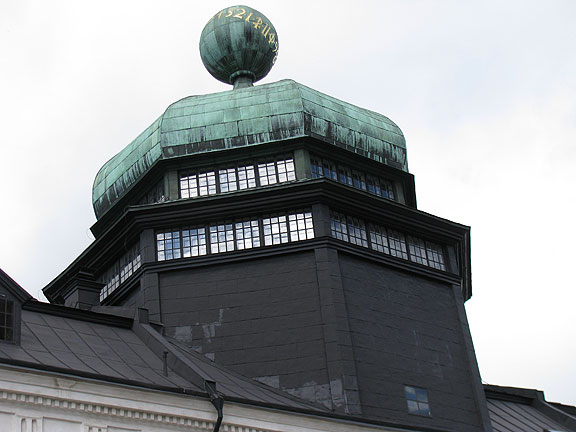
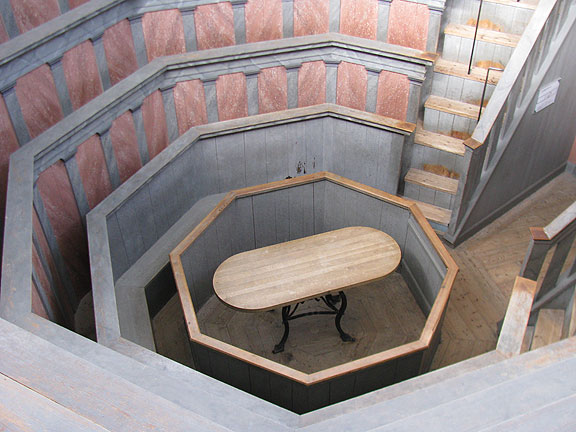
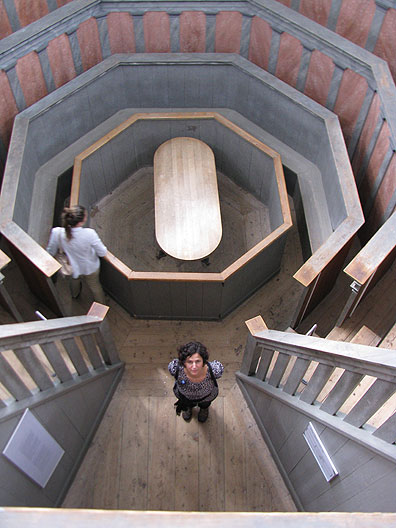
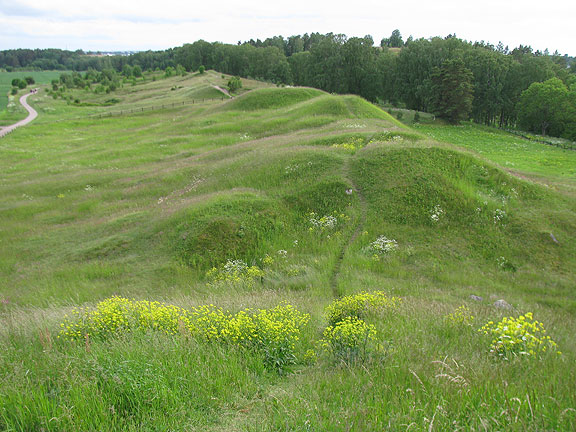
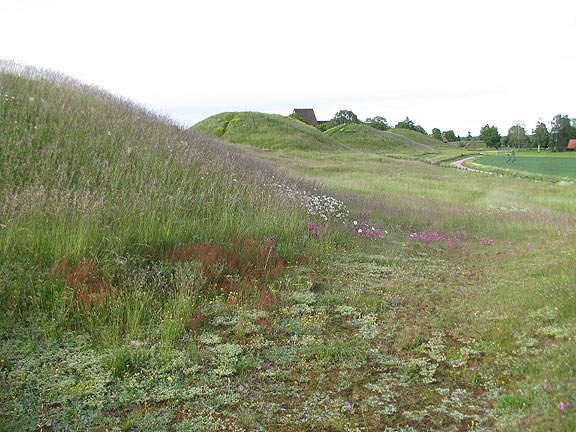
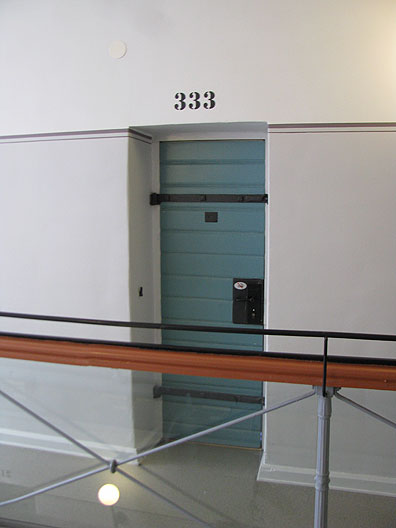
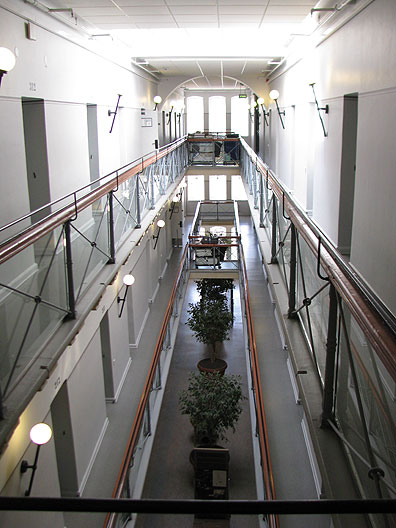
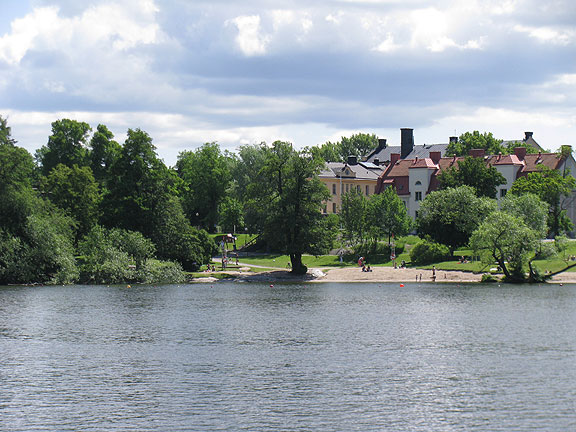
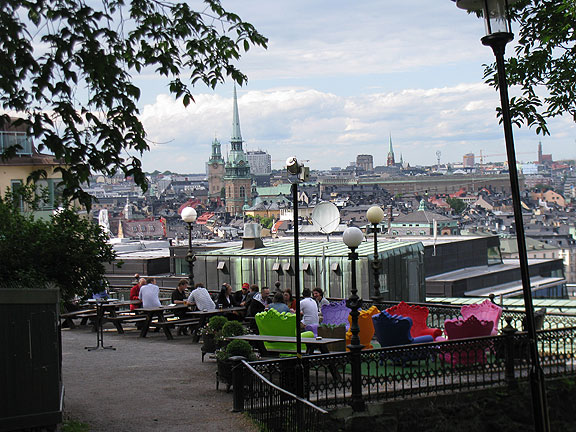
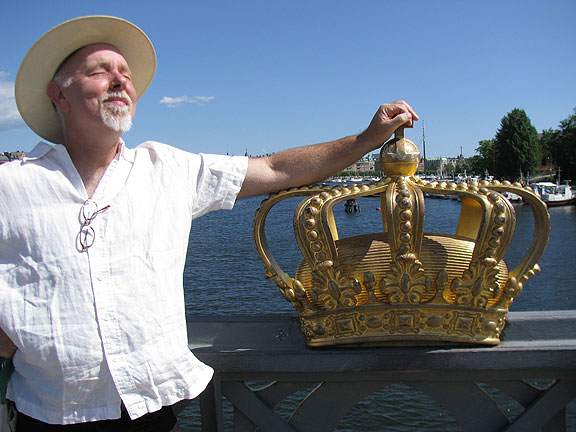
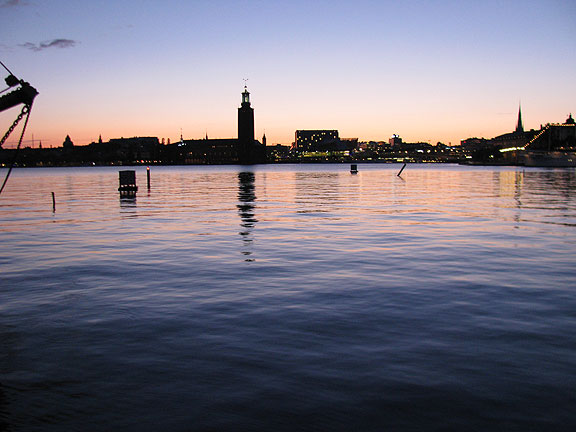
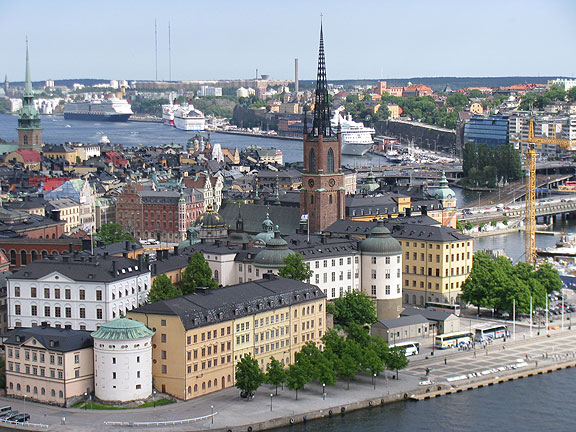
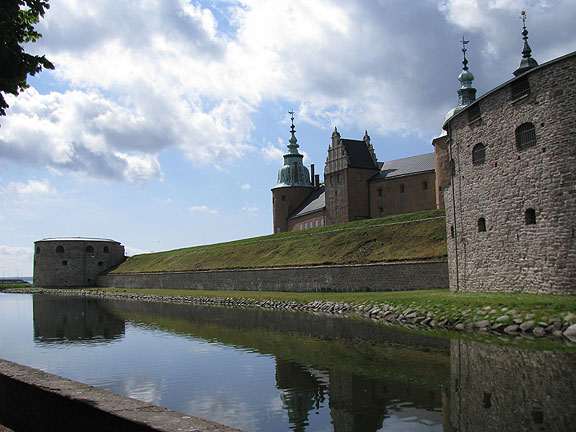
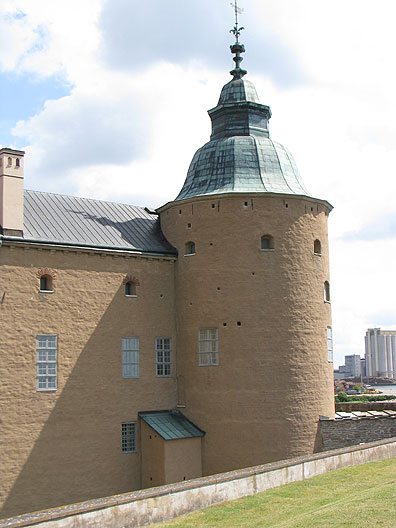
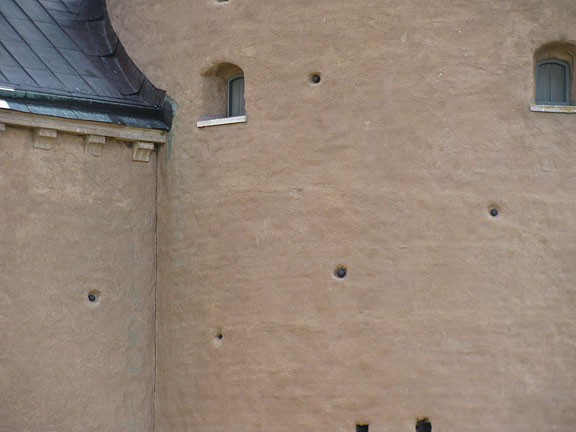
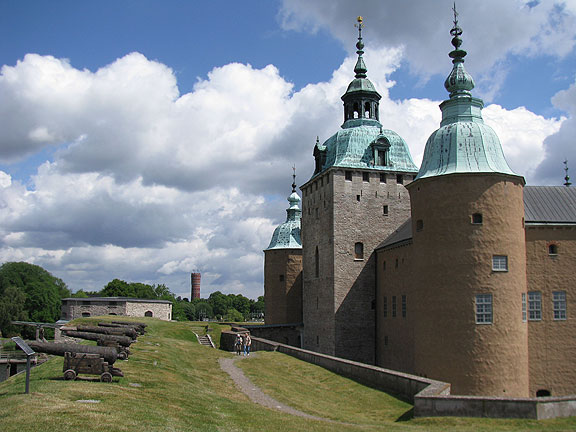











Leave a Reply